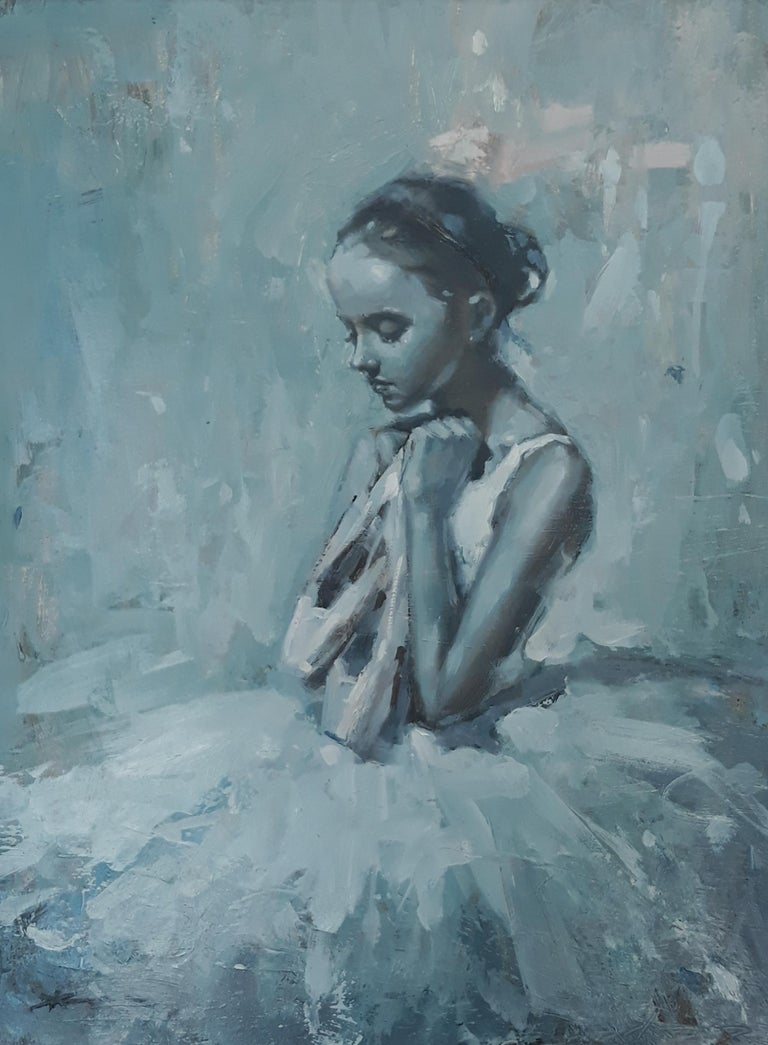A Journey Via the World of Metaphorical Oil Paint: Uncovering the Special Features and Psychological Depth of the Tool

History of Metaphorical Oil Painting
Arising throughout the late Middle Ages and flourishing throughout the Renaissance, figurative oil painting has an abundant history that mirrors both artistic development and cultural evolution. Initially, oil paints were utilized in Europe as a way to boost the luminance and depth of color in art work. Musicians such as Jan van Eyck spearheaded the tool, showing its prospective to capture intricate information and appearances, therefore enabling a more natural representation of the human type.
As the Renaissance advanced, prominent numbers like Leonardo da Vinci and Michelangelo broadened the limits of metaphorical oil painting. They highlighted anatomical precision and viewpoint, creating jobs that communicated emotion and narrative depth. The tool's flexibility permitted for testing with light and darkness, leading to the growth of chiaroscuro strategies that further enriched the visual experience.
Distinct Features of the Tool
The development of metaphorical oil painting has been considerably influenced by the distinct attributes of the tool itself. Oil paint, made up of pigments put on hold in oil, uses musicians an exceptional adaptability that enables a wide variety of surfaces and structures. Its slow-moving drying out time makes it possible for careful mixing and layering, which can create deepness and luminosity unattainable in other tools.
Additionally, oil paint's abundant coloring supplies vibrant shades that maintain their strength in time. This characteristic is critical in figurative paint, where recording the subtleties of complexion and psychological expressions is vital. The capacity to accomplish subtle slopes and soft shifts enhances the natural quality of subjects, allowing musicians to communicate complicated emotional states.
Furthermore, oil paint sticks well to numerous surfaces, such as canvas, steel, and timber, expanding the extent of imaginative expression. The medium's flexibility sustains different techniques, from comprehensive realistic look to meaningful brushwork, making it possible for musicians to explore their individual designs.
Inevitably, the special homes of oil paint not just improve the aesthetic experience yet additionally empower musicians to interact extensive stories, making metaphorical oil painting a deeply evocative art kind.
Designs and strategies Used
Within the realm of figurative oil painting, artists employ a diverse variety of strategies and styles that add to the depth and richness of their job. One noticeable technique is glazing, where clear layers of paint are used over dried out layers, permitting light to reflect and pass through, boosting brightness and deepness. This approach is commonly utilized to attain a sense of realistic look and intricacy in complexion.
One more strategy is impasto, where thick layers of paint are applied with a scheme knife or brush, developing a textured surface area that adds a three-dimensional quality to the painting. This style can stimulate a natural reaction, drawing the customer in through its tactile nature.
Musicians likewise explore numerous brushwork styles, from fine, i was reading this detailed strokes that catch detailed functions to more comprehensive, much more expressive strokes that convey movement and feeling (figurative oil painting). The option of shade combination dramatically influences the general mood of an item, with cozy tones often passing on feelings of convenience and amazing tones recommending melancholy
Furthermore, the integration of chiaroscuro, the contrast between light and shadow, permits artists to develop significant effects that boost the narrative high quality of their work. Each strategy and design is thoroughly selected to boost the visitor's experience and understanding.
Psychological Deepness in Metaphorical Art
Psychological deepness functions as a cornerstone in figurative art, permitting artists to go beyond mere representation and involve audiences on an extensive level. This psychological vibration is usually accomplished through the nuanced portrayal of human figures, expressions, and interactions. Artists harness the power of light, shade, and shadow to stimulate sensations that resonate deeply with the audience, developing a natural link to the subject.
In figurative oil painting, the complex layering of paint can show the intricacies of human emotion. The option of palette, whether cozy or awesome, plays a critical duty in setting the state of mind and ambience of a piece. Softer shades may stimulate peace and self-questioning, while strong, different colors can interact tension and dramatization.

Influential Artists and Their Functions
Many influential musicians have dramatically shaped the landscape of figurative oil paint, each adding unique perspectives and methods that proceed to inspire modern creators. Amongst these musicians, Lucian Freud stands apart for his intense psychological deepness and raw representation of the human kind, typically obscuring the lines between elegance and decay. Freud's jobs, identified by thick, impasto brushstrokes, welcome visitors to face the complexities of identity and susceptability.

Likewise, Andrew Wyeth's meticulous realistic look in items like "Christina's Globe" captures profound narratives within relatively simple compositions. His use of light and shadow evokes a feeling of nostalgia and emotional resonance, drawing audiences right into the intimate worlds he portrays.
In the world of modern art, Kehinde Wiley has gotten acknowledgment for his dynamic, epic portraits that challenge standard concepts of depiction. By putting individuals of shade in contexts reminiscent of timeless portraiture, Wiley's work redefines the canon of art history.
These musicians, together with others, have not only enriched figurative oil painting but have also broadened the dialogue bordering culture, feeling, and identification, making sure that the tool stays a crucial type of expression in the art globe. figurative oil painting.
Verdict
In final thought, figurative oil paint continues to be a powerful medium that envelops the complexities of human feeling with its abundant coloring and versatile techniques. The trip via metaphorical oil paint discloses its enduring value in the art globe.
The expedition of figurative oil painting provides an extensive insight right company website into the interplay of method, feeling, and historic context that defines this venerable medium. Oil paint, made up of pigments put on hold in oil, offers artists an exceptional adaptability that enables for a vast array of structures and coatings.Within the realm of figurative oil paint, artists use a diverse variety of strategies and designs that add to the deepness and richness of their work.Countless significant musicians have dramatically shaped the landscape of figurative oil painting, each contributing distinct perspectives and techniques that continue to influence modern designers.In conclusion, metaphorical oil painting stays a powerful tool that envelops the intricacies of human emotion through its rich pigmentation and versatile methods.